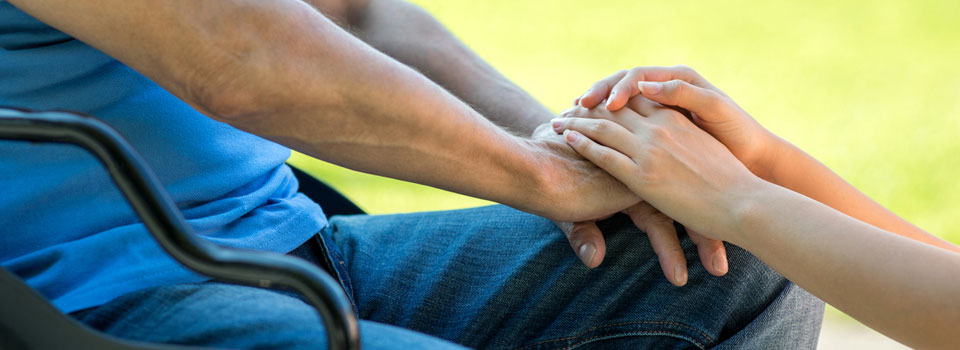Forty-year-old Steve is an avid technophile, devoting his time to watching movies, playing computer games or his iPad. Steve and Maggie lead a peaceful life, but it has been a long and difficult journey to get here.
Steve was just thirty and living with his wife and three children when he was found unconscious in his country Victorian home. He had suffered a brain aneurism twenty hours earlier. Treated initially in a Melbourne hospital, he returned to a country Victorian hospital where he remained for eighteen months.
Maggie faced many challenges during this time and fought for Steve every step of the way.
“I wish that we had made a film documentary to show Steve’s recovery process,” Maggie says now. “It is too easy for professionals to make decisions for you. The brain can rewire itself and find new pathways.”
Recovery is an ongoing process and cannot be limited by preconceived ideas of a certain number of years.
“Four months after his aneurism, there was a move to remove Steve’s feed tubes – so that he could ‘die with dignity’. As a mother, I opposed this and went to VCAT to gain guardianship. I knew Steve’s brain was working when he grabbed a bar of chocolate and hid it in his bed.”
Once Steve had recovered enough to leave hospital, the journey to give him ‘quality of life’ had only just begun; Steve moved into a country Victorian nursing home before VCAT determined he could be transferred to Melbourne to support his health needs. Unfortunately, that has also meant moving further away from his children whom he now sees rarely.
Although Steve was desperate to return to his own home, his high care needs meant there were few long-term living options available. Community residential units and nursing homes were some of the only options available before the MyFuture, MyChoice (MFMC) – Victoria’s YPIRAC program – provided a health professional counsellor to meet with Steve and Maggie. “For the first time,” Maggie says, “we were asked what it was that we wanted.”
A plan was developed which included leasing an adequately-sized unit for Maggie and Steve, employment of carers to assist in personal care, therapy funded by Victoria’s Slow-To-Recover Acquired Brain Injury Rehabilitation (STR) program, community access visits and a weekly rehabilitation group for people re-learning to talk. Maggie also bought a modified car with her superannuation money to give her and Steve greater freedom of movement.
Update
Eight years after his injury, Steve continues to make improvements. Steve and Maggie’s lives would be very different without the assistance of MFMC. MFMC supported Steve’s ongoing recovery and enabled him to take advantage of the STR rehabilitation he was provided.
Steve has proven that a supportive healing environment with increased decision-making maximises health recovery. Other young people and their families need to be given this opportunity too.
The final words are Maggie’s. “People question Steve’s quality of life, but I tell them that they are measuring quality from their own point of view. Our goals now are that independence is further achieved with support so Steve never has to return to a nursing home”.

